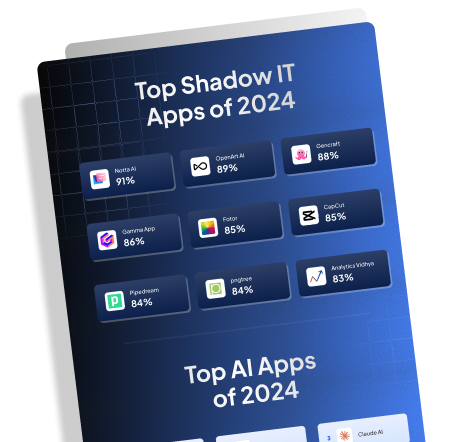A Renewal Strategy is an orchestrated approach that businesses utilize to ensure the continued subscription of their products or services from existing customers. It encompasses planned customer engagement activities, renewal notifications and incentives, and comprehensive management of the renewal process to optimize customer retention rates.
So, one might ask, does an effective renewal strategy guarantee sustained renewal success? Not always. To ensure customer loyalty and repeat business, your renewal strategies must actively adapt to changing renewal trends and leverage renewal metrics for customer segmentation and personalized customer experiences. Incorporating renewal automation can streamline the process, reduce errors, and provide timely renewal reminders, fostering a customer-centric approach. Also, applying data-driven renewal analysis and forecasting can greatly enhance renewal performance, serving as a playbook for improving customer renewal rates. Take lessons from renewal case studies and best practices – a well-planned, flexible, and comprehensive Renewal Strategy is key.
Note: Torii streamlines your Renewal Strategy using its SaaS Management Platform, automating license operations, setting workflows based on contract details, and providing company-wide license utilization visibility. Learn more at https://www.toriihq.com/saas-vendor-renewal-management.

What Are Some Examples of Renewal Strategy?
- Licensing Renewal: In the IT world, a common renewal strategy involves software licensing. IT Managers could plan renewals around budget cycles or end of financial year, negating sudden financial surprises.
- Cloud Services Renewal: Cloud services like AWS require regular renewals. The strategy might factor in scaling usage requirements, availing volume discounts, or transitioning between plans.
- Hardware Renewal: An enterprise’s infrastructure like servers might need periodic renewals. Continuous evaluation can maximize performance and reduce costs.
- Torii for SaaS Management: A renewal strategy for SaaS using Torii can include tracking usage, identifying underutilized subscriptions, and dealing with vendor negotiations to ensure optimal utilization and cost efficiency.
Note: Each example has variables influenced by unique corporate goals and priorities.
Best Practices for Renewal Strategy
- Customer Renewal Rate Examination: Regularly analyze your customer renewal rates. This key renewal metric provides essential insight into customer satisfaction and your product’s value.
- Streamline Renewal Process: Make the renewal process intuitive, quick, and effortless. Renewal automation, like Torii SaaS Management Platform, can greatly simplify this process resulting in an optimized subscription renewal experience.
- Design a Renewal Playbook: Craft a playbook that outlines your renewal strategies and tactics. It should include best practices, case studies, and renewal trends to guide your team.
- Set Up Renewal Reminders and Notifications: Keep your customers informed and engaged through renewal reminders and notifications. These alerts can increase renewal success by reducing the chance of customer turnover.
- Offer Renewal Incentives: Incentivize your customers to renew their subscriptions by providing them with exclusive benefits or discounts. This tactic drives up renewal rates.
- Renewal Management and Performance Monitoring: Monitor and manage your renewal performance carefully. Use renewal metrics to identify any gaps or opportunities for improvement in your strategy.
- Data-Driven Renewal Forecasting: Utilize renewal forecasting to anticipate renewal rates, potential revenue, and customer churn. Tools like Torii provide detailed analytics and insights that aid in this in-depth analysis.
- Customer Segmentation for Renewal Strategies: Use renewal segmentation to create tailored strategies for different customer groups. This personalized approach increases customer satisfaction and, consequently, renewal success.
- Automate Your Renewal Workflow: Use Torii SaaS Management Platform to automate your renewal process. It helps in tasks such as license optimization and cost savings, improving your renewal management efficiency.
- Iterative Renewal Optimization: Continually improve your renewal process based on feedback and analysis. From time-to-time, review your renewal playbook and update it with new trends, insights, and best practices.
Remember, successful renewal strategies focus on customer satisfaction, proactive engagement, and efficient process management. Utilize tools like Torii to simplify these tasks and increase your renewal success.
Tools for Success: Renewal Strategy
- Torii: AI-powered SaaS Management Platform for IT
- G2 Track: Manage software renewals
- Blissfully: Automated SaaS management
- Cleanshelf: Monitor and optimize subscriptions
- Zylo: Comprehensive SaaS management solution
Going Deeper: Related Terms
Renewal Strategy is a vast topic, and understanding it thoroughly requires diving into related terms. Here are five critical terms that will help you explore the subject further:
- Customer Retention: Techniques and tactics that aim to keep customers engaged and satisfied to encourage repeat business.
- Customer Lifetime Value (CLTV): A metric that estimates the total revenue a customer will generate over their lifetime as a customer.
- Churn Rate: The rate at which customers stop using a product or service over a given period, indicating customer attrition.
- Upselling: A sales technique where existing customers are encouraged to purchase higher-priced products or services.
- Cross-selling: Offering complementary products or services to existing customers, typically during the purchase process.
Take a moment to explore these terms and deepen your understanding of Renewal Strategy. For a comprehensive tech glossary, check out our full directory at https://www.toriihq.com/glossary.
FAQ – Renewal Strategy
Q: What is a renewal strategy?
A: A renewal strategy refers to a plan or approach put in place by organizations to retain existing customers or clients.
Q: Why is a renewal strategy important?
A: A renewal strategy is important as it helps businesses maintain customer loyalty, drive repeat business, and generate steady revenue.
Q: What are the key components of a renewal strategy?
A: The key components of a renewal strategy include analyzing customer feedback, identifying pain points, addressing customer needs, offering incentives, and providing regular communication.
Q: How can a renewal strategy be implemented effectively?
A: To implement a renewal strategy effectively, businesses can focus on personalization, building strong relationships with customers, offering exclusive discounts or benefits, providing exceptional customer service, and continuously evaluating and improving the strategy.
Q: What are some common challenges in executing a renewal strategy?
A: Some common challenges in executing a renewal strategy include identifying the right time to approach customers for renewal, effectively communicating the value proposition, competing with similar offerings in the market, and managing customer expectations.






